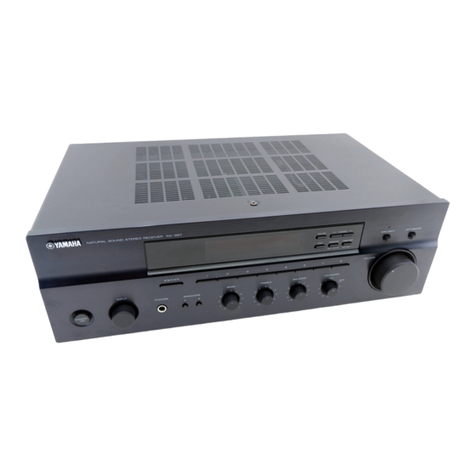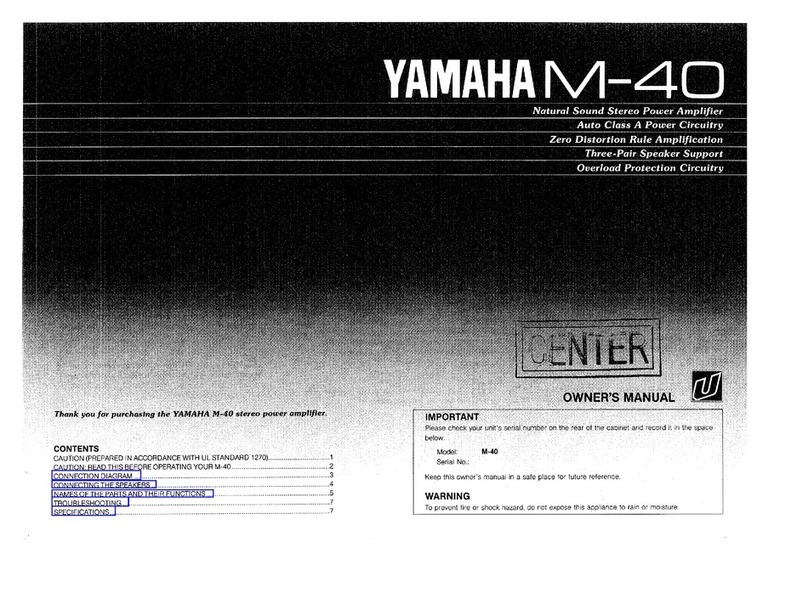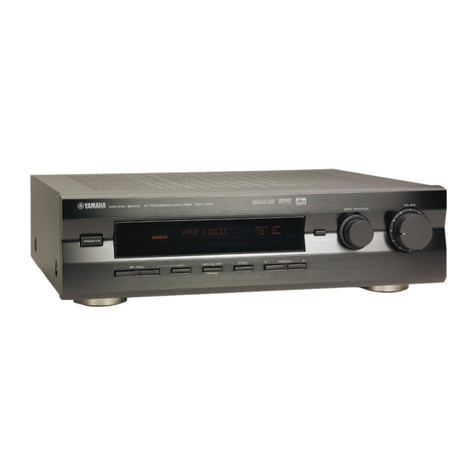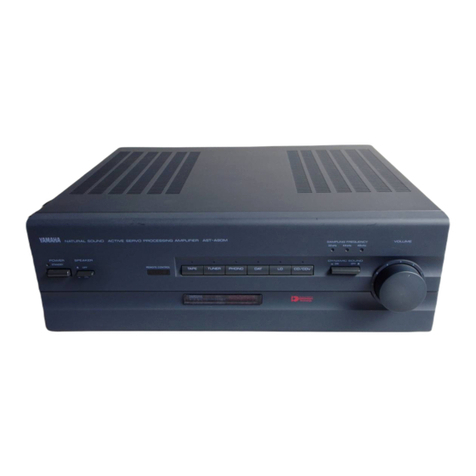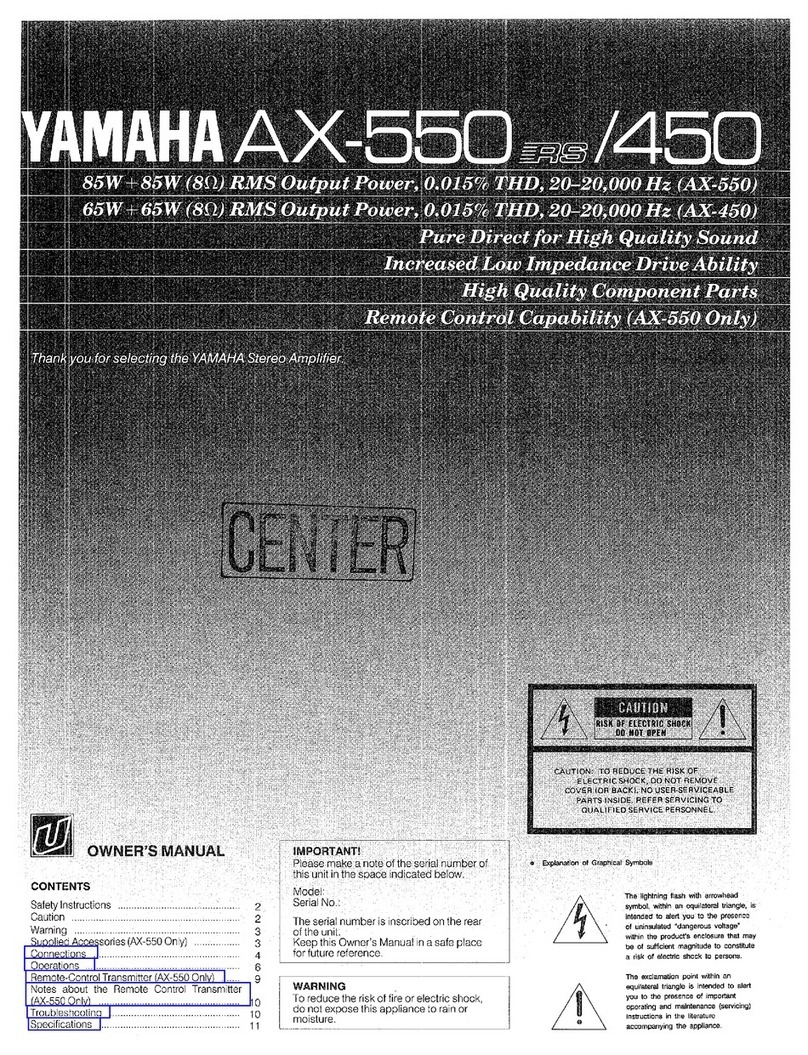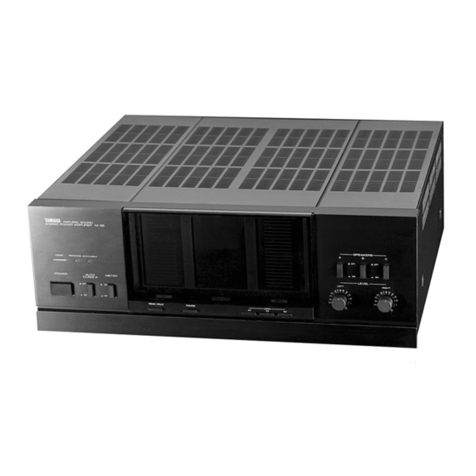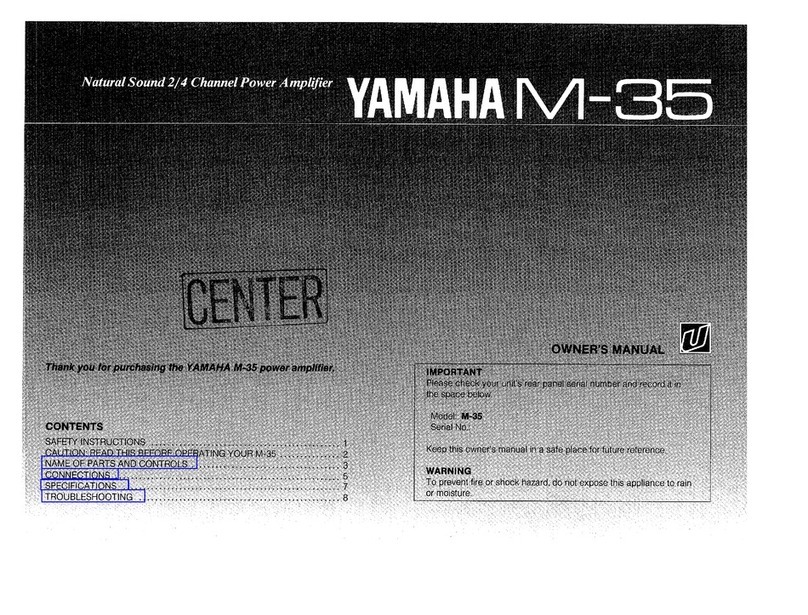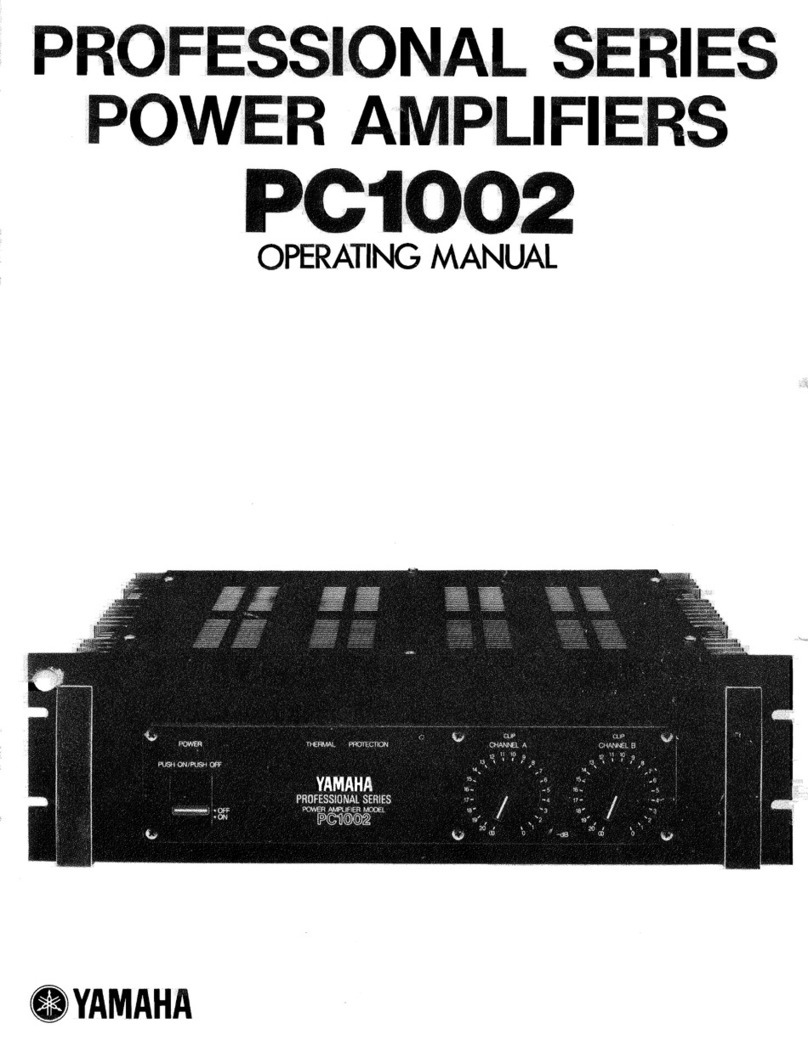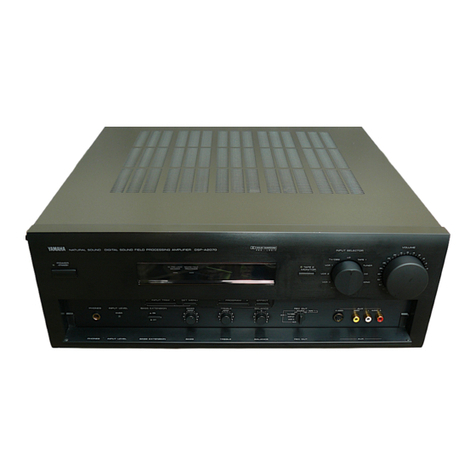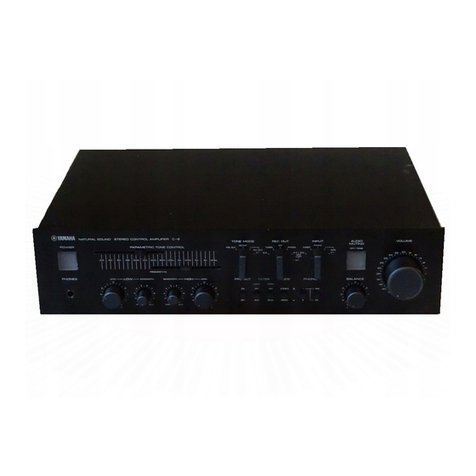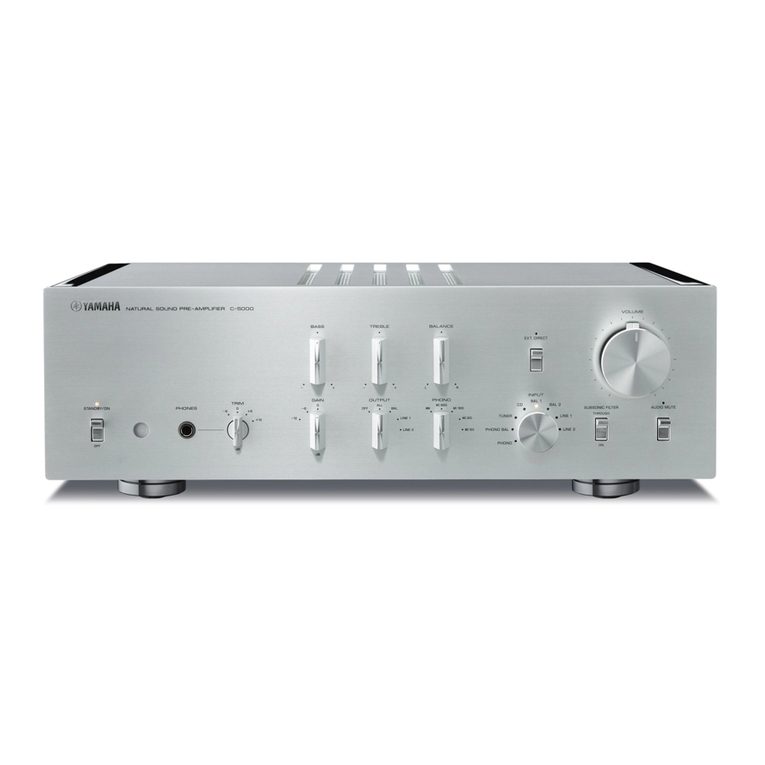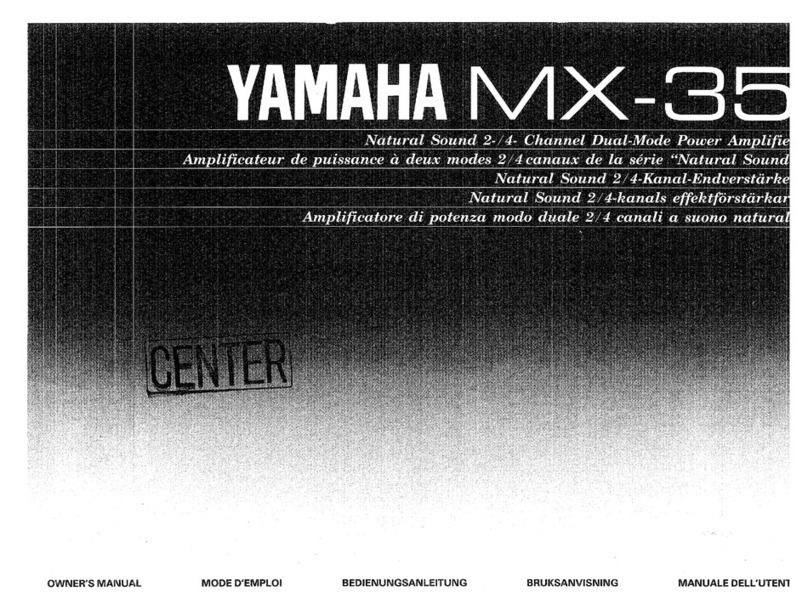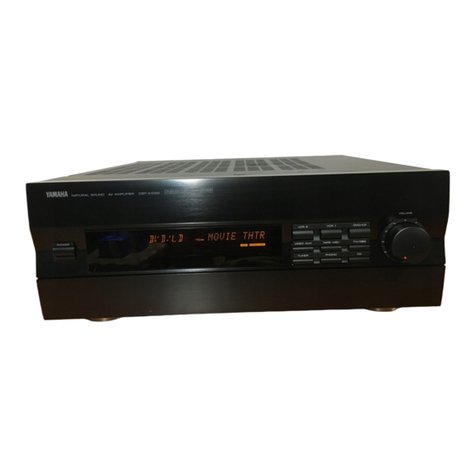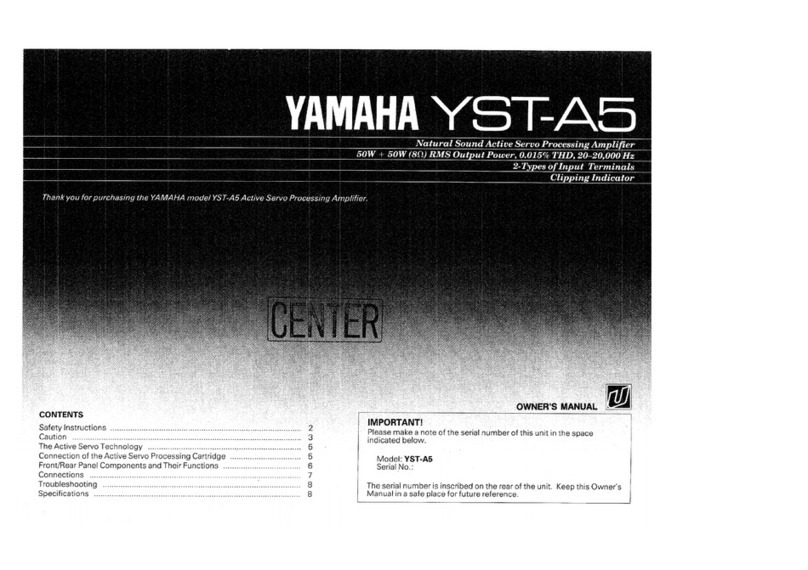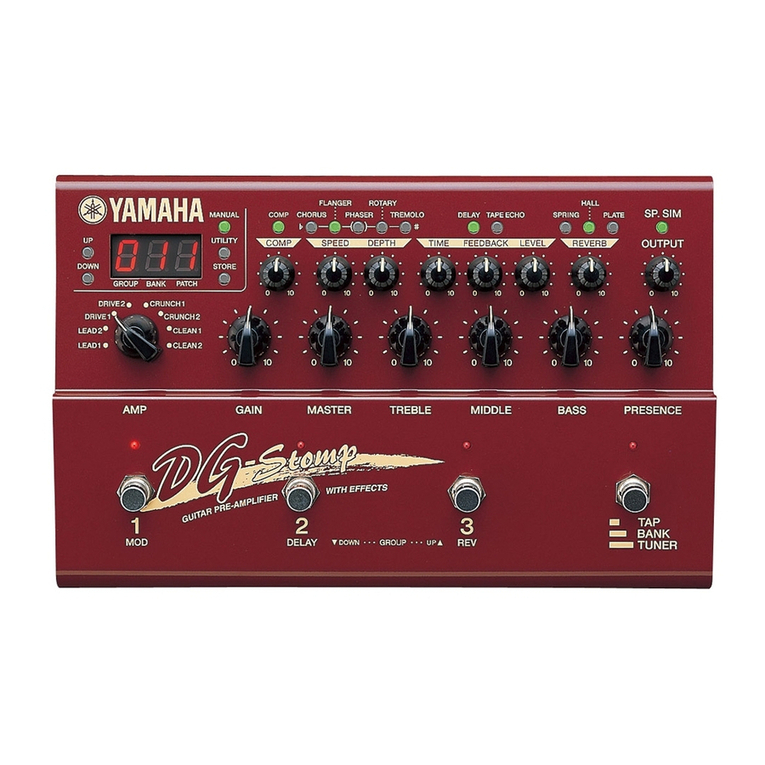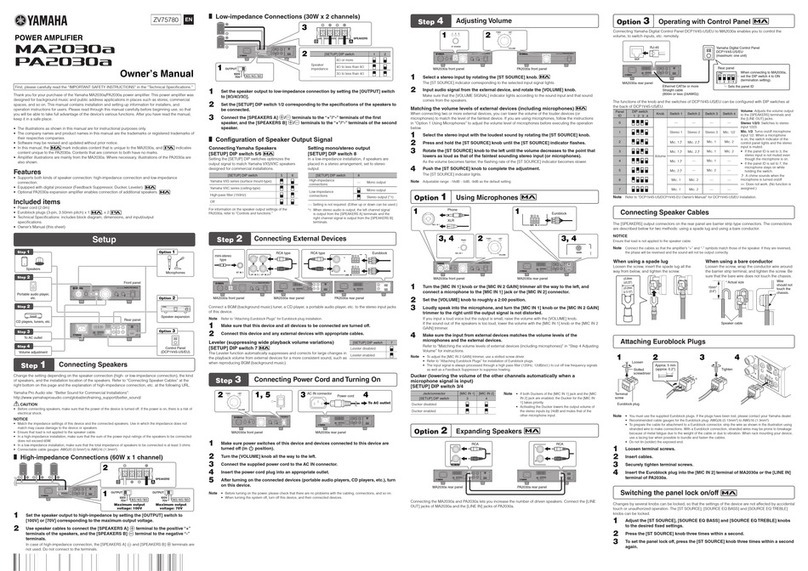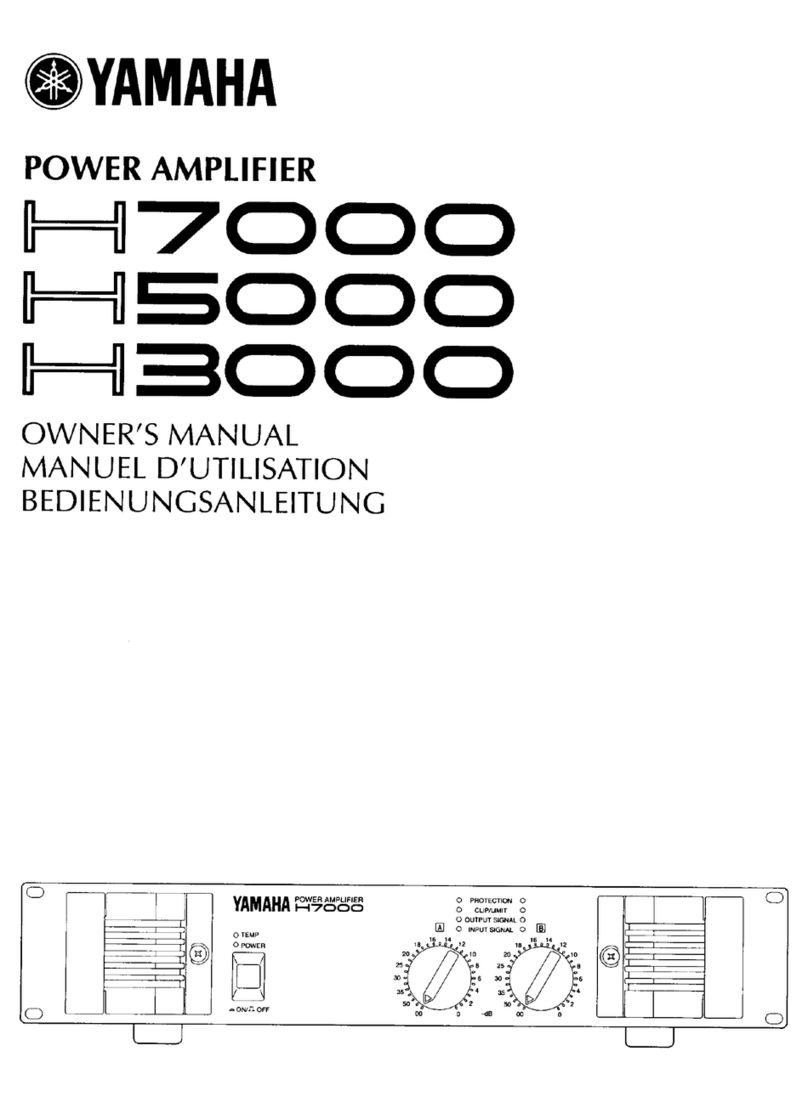
INTRODUCTION
The P-2200 is notjust"anotherbigamplifier;"itis
an exciting new approach to high power sound. Yamaha's
leadership is clearly demonstrated by the P-2200's pro-
fessional features, sophisticated design, and uncom-
promising performance.
PEAK READING METERS*
Instead of the more common and slow responding
VU meters, the P-2200has PEAK READING METERS
that
accurately display
a
full
five
decades
(50dB)
of
output level. The peak meters have large, illuminated
faces marked with dB and with watts into 8 ohms. The
fast responding meters provide a better way to see the
program dynamics, the transient power demands placed
on the system, and the available headroom. By indicating
headroom, the meters help the operator avoid over-
driving the system, thereby preventing the "clipped"
waveforms so dangerous to drivers and loudspeakers.
CALIBRATED INPUTATTENUATORS
The P-2200 has log-linear INPUT ATTENUATORS to
complement itspeak reading meters. The input attenua-
tors are marked in22dB-calibrated steps, detented for
extra accuracy. The attenuators provide a smooth, noise
free transition from the highest to the lowest audio level.
dB-calibrated
input
attenuators
have
numerous
advantages: onthe road, they allow predictable and
repeatable setups; incommercial sound applications,
they allow easy, accurate inputsensitivity adjustments;
instudios or discos, they letoperators simultaneously
adjust the level oftwo channels (or two programs on
separate amplifiers) with precise tracking.
INPUT AND OUTPUT CONNECTIONS
INPUT CONNECTORS for each channel include one
"male" and one "female" XLRconnector (unbalanced)
plustwo parallel phone jacks. This provides the flexi-
bility
necessary
for
convenient bridging
to
another
amplifier, as well as for adapter-free connection to
almost any mixer. A POLARITY switch allows either
pin2 or pin3 of the XLRto bechosen as the "hot"
lead, satisfying DIN/JIS or USA standards. Outputs are
standard fiveway binding posts, usable with highcurrent
"banana" plugsordirect wired connections.
MONAURAL OPERATION
The P-2200 may beconverted to a monaural "super
amplifier" byinserting two matched transformers
ahead of the inputs, feeding the same signal to both,
and reversing the POLARITY switch on one input.This
creates a transformerless balanced output, the speaker
load "bridged" across the "hot"terminals of both
channels. Inthis mode, the P-2200 issuitable for
driving almost any load, including highly reactive70-volt
commercial speaker lines. With a full 400 watts into
16ohms, the P-2200 inmono mode eliminates theneed
for several smaller 70-volt amplifiers.
PERFORMANCE
The P-2200'sperformanceisasimpressiveas its
features. At a sustained output of 230 watts into 8 ohms
(for each channel), there isplenty of punch to reproduce
the powerful peaks essential to clean studio monitoring.
Highpower handling also makes the P-2200 an unbeat-
able choice for live rock ordisco sound systems, where
an amplifier can really "cook" all nightlong.Power alone
is
no
virtue;
the P-2200
has
ultra-low
distortion,
less
than
0.05%THD at full rated power - the kind of low
distortion that isundetectable by even the most critical
listeners.
Ahighdamping factor of better than 300 at
frequencies below 1kHzreduces the tendency for
speaker cone overshoot, giving tighter and better defined
bass response. Onthe other end, the P-2200's frequency
response extends well beyond 100kHz, enabling itto
accurately reproduce the most complex musical wave-
forms — even the tortuous output of today's synthe-
sizers. However, highfrequency response has notbeen
achieved at the expense of stability; infact, the P-2200
isrock steady. Even when connected to highly reactive
multi-speaker loads, there isnotendency to shut down
or"take off" into spurious oscillation.
MECHANICAL CONSIDERATIONS
The P-2200 isconstructed to withstand the high "G"
forces encountered on the road. Itssolid front panel
mounts inany standard 19-inchrack, and, for a large
amplifier, the P-2200 weighs a modest 44 pounds
(20kg)** Front panel controls and meters are recessed to
avoiddamageor accidental settingchanges,and are
further protected bya pair of sturdy carryinghandles.
Inside
and
out,
the P-2200
is
extremely reliable.
Still,
should
service
ever
be
required, the
unit
is
designed
for
easy access. Massive side-mounted heat sinks are
designed forefficient cooling, making fans unnecessary
inallbutthe most severe thermal operating conditions.
Four non-conductive feet ensure proper air flow when
the amplifier isshelf mounted, and avoid inadvertent
ground loops. Multiple protection circuits make the
amplifier nearly abuse proof and eliminate the need for
troublesome DCpower supply fuses.
*The P2201 does nothave the Peak Reading Meters.
** The P2201 weighs 42 pounds (19kg)
